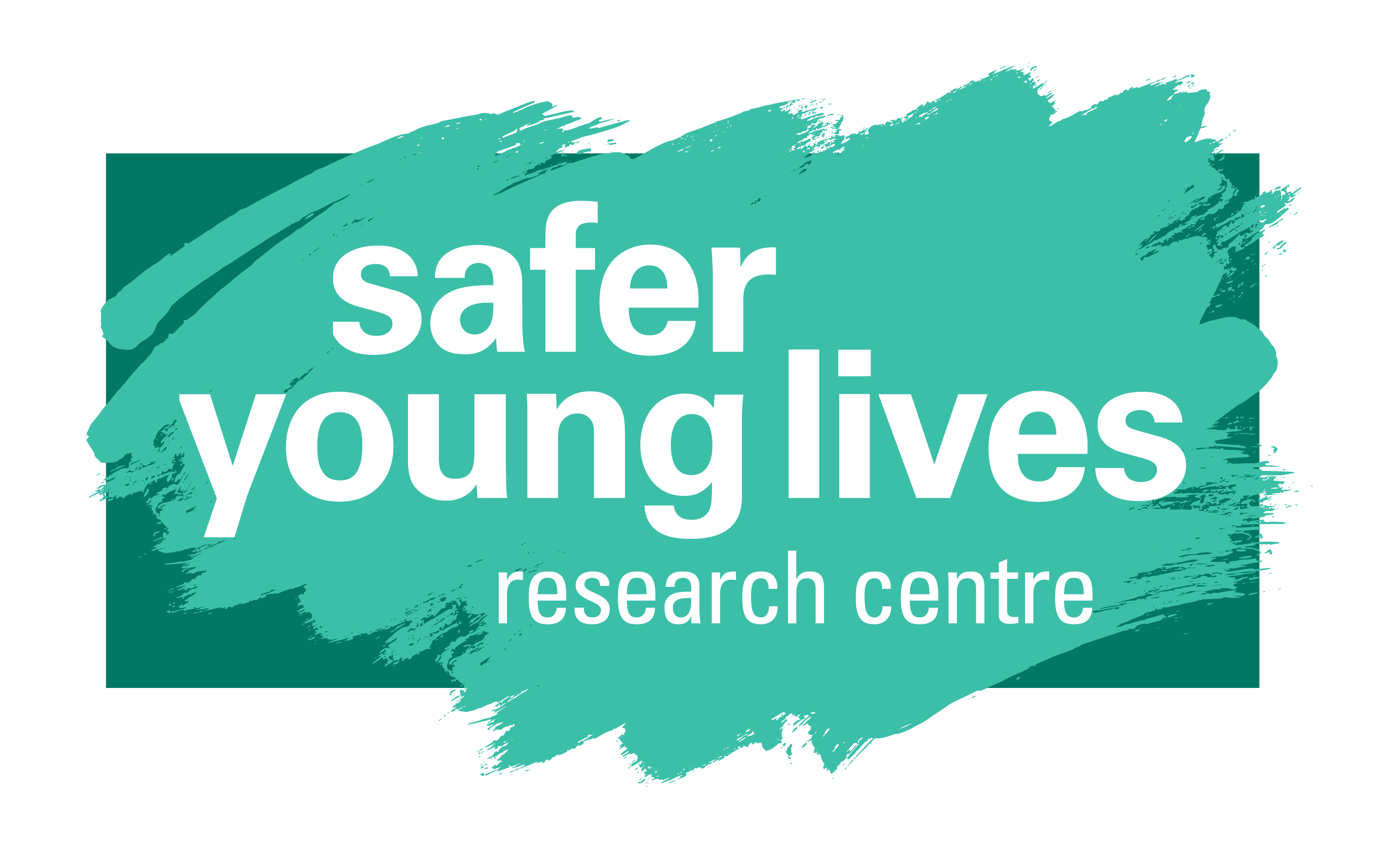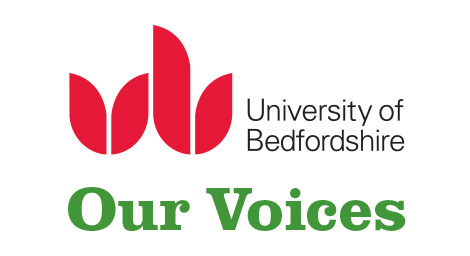“The ethical red flags are waving a lot more furiously than with girls and women”: The participation of boys and young men in research on child sexual abuse and exploitation

In May 2022, The Our Voices team hosted a small online group discussion with four members of the Our Voices University Network (OVUN) to explore the participation of boys and young men in research on child sexual abuse and exploitation. This discussion was part of the OVUN’s ‘participation is protection’ strand of work which aims to promote international dialogue around the value and complexities of supporting children and young people impacted by child sexual abuse and exploitation to take an active role in decision-making.
Researchers know that boys and young men who have been subjected to sexual abuse and exploitation are less visible to support services. Given that opportunities to participate in research on the topic of sexual abuse and exploitation frequently come through services, this means boys and young men are less likely to be represented in such activities. This makes them an important group to focus on as part of this strand of work.
All four discussants have expertise in researching sexual abuse and exploitation with boys and while one and a half hours was simply not long enough to fully explore this topic (!), which as one OVUN member reflected, ‘could have gone off in 15 different trails!’, this blog shares some of the key messages from the discussion, concluding with reflections about how the OVUN can support others interested in working with boys and young men.
Accessing boys and young men to take part in research
There was agreement in the group that accessing research participants through existing services was the safest and most ethical approach to working with children and young people affected by sexual abuse and exploitation. It allows researchers to screen young people for participation and ensures the provision of wrap-around support during and after their engagement in the research process. However, when it comes to accessing boys and young men, a number of limitations with this approach were voiced, including:
Service provision for boys: the group affirmed that there are far fewer specialist services for boys and far fewer boys engaged in support services for a range of reasons that do not reconcile with the prevalence of the problem. This skews the sampling picture and requires different approaches.
Where there are no existing services for boys or no boys engaged in services - researchers may need to access boys and young men affected by sexual abuse and exploitation through other means. This is necessary for generating evidence to demonstrate the need for gender-specific services, but can present ethical dilemmas for the research process and wellbeing of participants (and researchers).
Finding the ‘right’ services: even when specialist support services did exist, and did work with a small number of boys, it was felt that it was important for researchers to spend the time to carefully select service partners from which to identify participants - and not make assumptions about the skills, capabilities and ways of working of the service:
“Never make any assumptions that because somebody has a 20 or 30 year history in child protection that they understand the dynamics around working with boys and people who have diverse SOGIE [Sexual Orientation, Gender Identity and Expression] and others - because quite often they don't. You scratch below the surface and they don't and it can actually result in putting boys in, in a more difficult situation.”
Gender norms, perceptions and assumptions
Difficulties engaging boys and young men in research are compounded by misplaced narratives that seem to perpetuate about boys and young men and how they experience sexual abuse and exploitation. Specifically:
Perceptions of prevalence: It’s known that ascertaining prevalence of child sexual abuse and exploitation is difficult. In terms of boys and young men, discussants emphasised that the rates are particularly unclear, and may even be misrepresented, downplayed or ignored. They also shared how common it is to hear staff working in support services say that child sexual abuse and exploitation is an issue affecting girls more than boys, which in some contexts may not necessarily be true. In reality, evidence increasingly indicates that large numbers of boys are affected by sexual abuse and exploitation, and have significant needs (that are often going unmet).
Perceptions of boys: Linked to perceptions of prevalence, discussants described how boys and young men can often be (wrongly) seen as less vulnerable to sexual abuse, more able to protect themselves, and less seriously affected than girls and young women. One discussant explained that accessing boys for research was also often seen as ‘more risky’ and in some cases boys are more likely to be considered as potential abusers, rather than vulnerable children.
“Often a lot of service providers and caregivers and parents would push back and say no, and that it's far too risky [to interview them and involve them in research], it is better to leave this issue alone. It's too dangerous. We don't know what we're dealing with here, and probably I think in slightly different ways than they would with girls and young women. I think that's the impression I get out of many years’ experience is that boys are seen as more of a risk, potentially more dangerous, and an assumption exists that adults know best”.
One discussant mentioned that boys often notice and comment on this, stating that they feel as if no one cares about boys, and that they do not always feel ‘welcome’ when they approach services. This can increase their feelings of marginalisation and isolation.
The group discussed that the ways boys may present when they have been subjected to sexual abuse and exploitation must also be considered. While every child and young person will respond to their experiences in different ways, it was noted that boys can often externalise their behavioural responses to abuse in ways which can sometimes lead to them being ‘stumbled upon’ in criminal justice settings. In such instances boys can be engaged in interventions which are inappropriate and/or inadequate for identifying and meeting their needs, and which may serve to perpetuate narratives of boys as ‘risky’ and ‘dangerous’ – rather than as a child or young person in need of support and protection. In light of this, discussants expressed that oftentimes, service providers [and researchers] are not provided with appropriate training or learning opportunities to understand the nuances of child sexual abuse and exploitation through a gender lens, so ‘male friendly’ and gender innovative services and approaches are rare.
"I think that's the impression I get out of many years’ experience
is that boys are seen as more of a risk, potentially more dangerous,
and an assumption exists that adults know best.”
What can researchers learn from the past?
Some of the discussants described feeling that our understanding of boys and young men in relation to sexual abuse and exploitation has developed at a relatively slow rate. They felt that we are at a point now of understanding sexual abuse of boys that is similar to where we were 20 years ago with girls and young women. There was a sense that it feels like we are “starting all over again” in terms of developing learning and understanding about boys and young men when actually much of the learning about girls and young women still applies to this group and that it was unnecessary to ‘start from scratch’.
For example, discussants reflected that researchers and service providers can often comment that “boys don’t want to talk”, implying a resistance among boys. The reality, however, is that when boys have the opportunity to build trusting relationships in safe environments, they can be very committed to sharing their experiences, ideas and solutions.
“…these are things that people would have said about working with girls 20 years ago, the same sorts of things, the same sorts of assumptions… let's learn from that and not make this take [another] 20 years to be able to appropriately protect and support boys who experience sexual violence”
As one discussant put it, we should have learnt that a “tailored response” to engaging with whoever is in front of us, either in a practice or research setting is always the best place to start. So although we may be struggling to know how to work with boys as a group – and it is important to recognise that interventions that ‘work’ for girls may not necessarily be appropriate for boys - the fact is that everyone is an individual and there isn’t a ‘one size fits all’ approach.
There was some positivity in the group that there is somewhat of a ‘ground swell’ at the moment and more interest and acknowledgement in preventing and better responding to sexual violence against children and young people in general. This meant there were more opportunities to access representative samples of children and young people at the population level through for example, questions in large scale anonymous surveys. However, there was also a recognition that research recommendations about ‘children’ affected by sexual abuse and exploitation conflates boys and girls when in reality they can reflect samples that are heavily weighted towards – or exclusively be – girls. Discussants felt it was important that researchers are transparent about such generalisations and that there is an ongoing need for research which adopts a more gendered lens so that we can continue to build our understanding of the distinct experiences and needs of boys and young men.
There was an understanding that young people’s participation was important and that it should influence processes related to the development and implementation of both practice and research. For example, asking boys and young men where and how they felt safest to participate in research, what they’d be interested to learn from the research, and providing clear choices (e.g. gender of researcher, method of communication and expression), and genuine opportunities to participate in co-creating the tools and processes.
“[We should be asking potential male research participants] What are the questions that you would like to be asked? What and how would you like to be asked them and under what circumstances? And what would that environment look like and what tools and ideas?”
This was seen as an essential starting point as often, again, we may make assumptions about what boys need and want. The group shared that while assumptions can often be made about boys being more comfortable in a group setting, many of the boys they had worked with had been far less open to taking part in group processes, even with peers who were aware of their experiences - potentially due to the stigma associated with such experiences that are socially imbued with shame and judgement and, for boys, compounded by specific gender norms and assumptions as described earlier.
Preparing and supporting researchers
Discussants spoke from their experiences of working with, and supporting, local practitioners to undertake research with boys and young men in a range of settings. They noted that an important first step in creating more opportunities for safe and ethical engagement of boys and young men in research, was giving practitioners and researchers the tools to reflect on their own beliefs, assumptions, concerns, fears and biases – in relation to working with boys in general – and more specifically, those affected by sexual abuse. For example, supporting practitioner – researchers to:
- reflect on any gender and social norms or biases they may hold and how these may impact on how they engage with boys and young men in a research setting
- speak freely about their experiences of being around and working with boys – sharing their fears and concerns, and also successes and strengths
- feel more equipped and confident to engage with boys, and ask boys and young men questions and talk about topics related to their experiences of abuse and exploitation
- reflect on their own gender and life experiences and how this influences their own perceptions, attitudes and behaviour
One discussant shared how it is often the case that practitioners and researchers think “I don’t think I could work with or do research with boys because they’re so different” – this immediately then closes this avenue off”.
Anecdotal evidence suggests that taking time to explore these issues and others, can help practitioners identify crucial learning needs, develop confidence and learn new skills necessary to engage successfully and confidently with boys and young men. As with our work with all children, there are no ‘one size fits all’, quick fix, learning curricula and ideally greater attention should be given to develop tailor made learning, mentoring and support for researchers and practitioners – that is gender – and therefore genuinely trauma informed.
Moving forward: The role of the OVUN
In thinking briefly about how we could help OVUN members who want to engage boys and young men in their research, one discussant noted that ‘these conversations’ in and of themselves can really help. It was felt that the facilitation of safe spaces where researchers can come together to think, share, learn and support one another, was really valuable.
Discussants also reflected on the importance of researchers having consistent access to support, mentoring and debriefing as they navigate ongoing questions and encounter unexpected situations within the research design and implementation process. In addition, being able to access expertise from practitioners was also seen as beneficial to researchers and the research process.
“There are barriers between of civil society, NGO sector and research, the barriers are coming down a little but if there's a mechanism to draw on the expertise of frontline work in developing countries, to advise and guide the process I think that would be great. So yes it's a chat with one of us is the whatever we are research community but also for a chat with the frontline worker”
It therefore appeared that a key role for this work strand would be to set up such a mechanism for OVUN members, a peer learning group and/or a community of practice to support these conversations and shared reflection.
“There are lots of routes we can take moving forward, but I think having conversations with others and the OVUN group…I think those conversations and peer discussions in whatever way they manifest themselves…just connecting and talking and listening is the way forward really. It’s invaluable”.
If you would be interested in joining future similar discussions or forming a peer learning group on engaging and researching with boys and young men, please get in touch!
About the discussants:
Alastair Hilton With a background in social work and child protection, Alastair is a passionate advocate for the rights of male survivors, which led to him being a founder member of First Step in the UK (1997) First Step Cambodia (2010), and the South-South Institute on Sexual Violence Against Men and Boys (2012). He was the lead researcher and author of 'I thought it could never happen to boys' (2008), the first in depth study of sexual abuse and exploitation of boys in Cambodia. He has subsequently worked on numerous studies related to sexual exploitation, abuse and sexual violence, more recently for ECPAT International, including projects related to Online Sexual Exploitation and Abuse (with partners in Africa and Asia), and the Global Boys Initiative, alongside partners in South Korea, Hungary, Pakistan, Sri Lanka and others. He developed the ‘Bridging the Gap’ toolkit for practitioners working with boys following sexual exploitation and abuse in 2020, in partnership with Down to Zero partners in Asia and Latin America, which has been translated into several languages. He is currently working to develop further strategic partnerships with a range of global development organisations - designing and implementing research related to sexual exploitation and abuse, and developing programs, prevention, support and learning initiatives.
Dr Mark Kavenagh is the Director of Evident, a small research company focused on supporting NGOs to make better use of data in child protection programming. His work has focused on sexual exploitation of children in recent years, including through establishing the Global Initiative to Explore the Sexual Exploitation of Boys in his former role at ECPAT International.
Dr Glenn Miles is a Senior Researcher with up! International. He has pioneer led three INGOs in Cambodia and has facilitated a number of research projects listening to survivors of sexual exploitation; prostituted men, women, boys, girls and transgender as well as male sex buyers. He is the academic research advisor for the Chab Dai Butterfly ten year Longitudinal Research Project. He teaches/lectures up to PhD level and does PhD supervision on issues around child exploitation. He also speaks widely at International conferences. He has had a concern for active child participation for 30 years. He is an active member of GAHTS, EFN and GLC www.gmmiles.co.uk .
Trudy Nyakambangwe is the Director of the Charity Child and Youth Care, in Zimbabwe and is a PhD student at Women’s University in Africa: Department of Child Sensitive Social Policy. She is passionate about promoting and championing the interests of neglected, vulnerable, and excluded children and young people and has a particular research interest in improving reintegration practices in Zimbabwe for young people who have experienced sexual exploitation. Trudy is a member of the Our Voices University Network (OVUN)’s leadership team – part of the Our Voices Programme at the University of Bedfordshire’s Safer Young Lives Research Centre.






